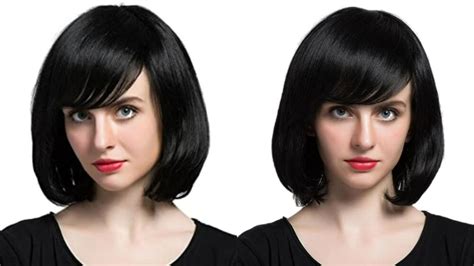Navigating the world of wigs can be overwhelming, especially for white women who may have specific concerns about finding natural-looking and flattering options. To help you make an informed decision, this comprehensive guide will delve into the key factors to consider when choosing the best wig for your unique needs.

Understanding Your Hair Texture and Color
The first step in finding the perfect wig is to understand your own hair texture and color. This will help you narrow down your choices and ensure that the wig you select complements your natural appearance.
Hair Texture
White women typically have fine to medium hair textures, with straight or slightly wavy strands. However, there is a wide range of variations within this category.
Straight: Straight hair is characterized by smooth strands with no natural curl or wave.
Wavy: Wavy hair has loose, “S”-shaped waves that add body and volume.
Curly: Curly hair forms defined curls or coils and can range from loose to tight.
Hair Color
White women typically have light hair colors, ranging from blonde to light brown. However, there are also variations in warmth and undertones.
Warm: Warm hair colors have golden or reddish tones.
Cool: Cool hair colors have ashy or blue tones.
Neutral: Neutral hair colors have a balance of warm and cool tones.
Types of Wigs
There are two main types of wigs: synthetic and human hair. Each type has its own advantages and disadvantages.
Synthetic Wigs
-
Pros:
- Affordable
- Variety of styles and colors
- Easy to maintain
-
Cons:
- Less natural-looking
- Can tangle and frizz
- Shorter lifespan
Human Hair Wigs
-
Pros:
- Natural-looking
- Can be styled and colored
- Longer lifespan
-
Cons:
- More expensive
- Requires more maintenance
- Can be difficult to find the perfect match
Choosing the Right Wig
Once you understand your hair texture and color, you can start exploring the vast selection of wigs available. Here are some tips to help you make the right choice:
Cap Construction
The cap construction of a wig determines how it fits on your head. There are three main types of cap constructions:
Monotop: A monofilament top provides a natural scalp-like appearance and is comfortable to wear.
Lace Front: A lace front provides a seamless transition between the wig and your hairline, creating a more realistic look.
Capless: A capless wig is lightweight and airy, making it ideal for hot weather.
Length and Style
The length and style of the wig should complement your facial features and overall style.
Length: Choose a length that is proportionate to your height and body type.
Style: Consider your lifestyle and daily activities when choosing a style.
Color and Highlights
The color and highlights of the wig should match your natural hair color as closely as possible. If you want to add highlights, opt for subtle tones that complement your base color.
Cost and Maintenance
Wigs can range in price from a few hundred dollars to several thousand dollars. Factor in the cost of maintenance, such as washing, styling, and repairing, when considering your budget.
Tips and Tricks for Maintaining Your Wig
To extend the lifespan of your wig and keep it looking its best, follow these tips:
- Wash: Wash your wig regularly with a gentle shampoo and conditioner.
- Style: Use heat protectant before styling your wig with heat tools.
- Store: Store your wig on a wig stand or in a box when not in use.
- Repair: Take your wig to a professional if it needs to be repaired or restyled.
Conclusion
Choosing the best wig for white women requires careful consideration of hair texture, color, cap construction, length, style, and maintenance requirements. By following the tips and advice in this guide, you can find the perfect wig that complements your natural appearance and enhances your confidence. Remember, with the right wig, you can transform your look and feel your most fabulous.
